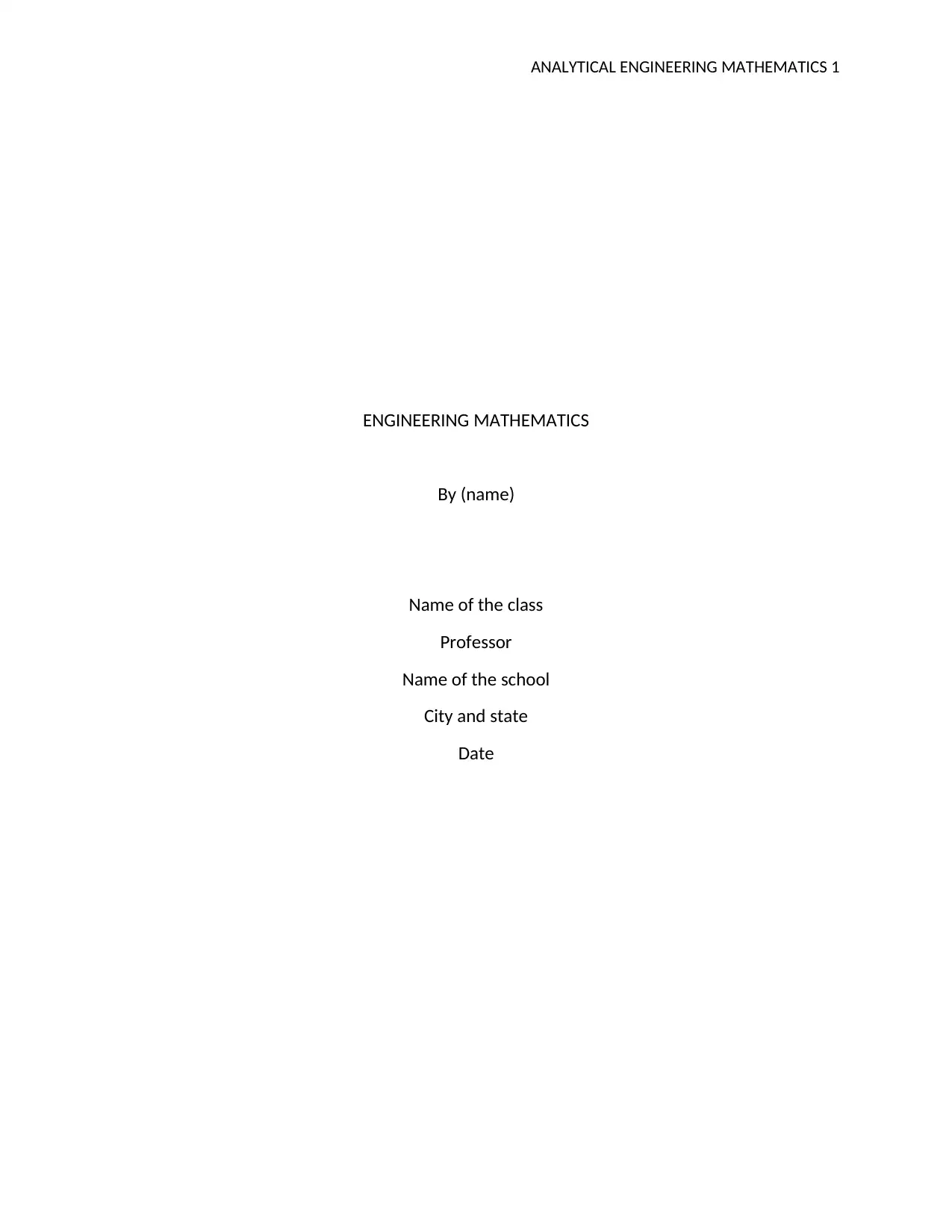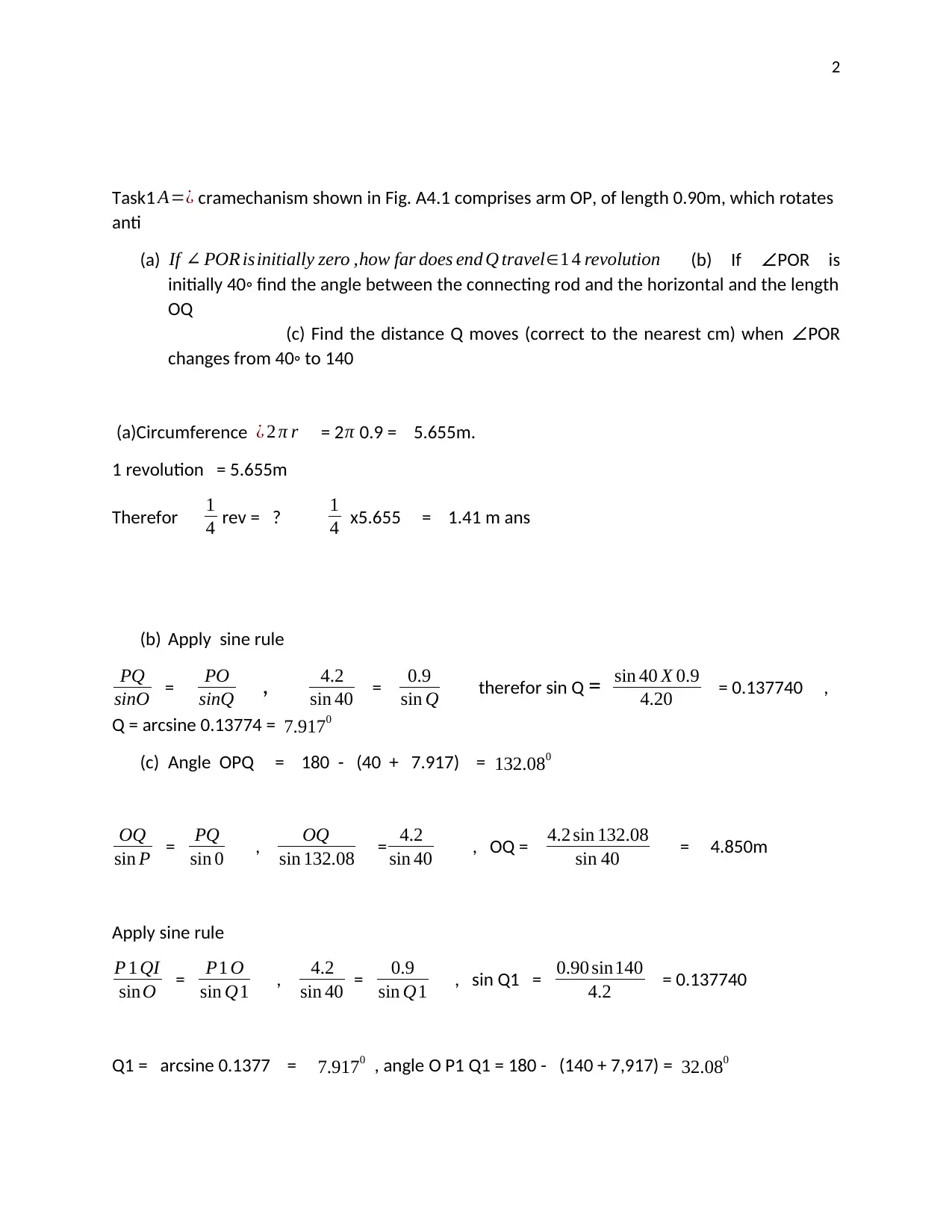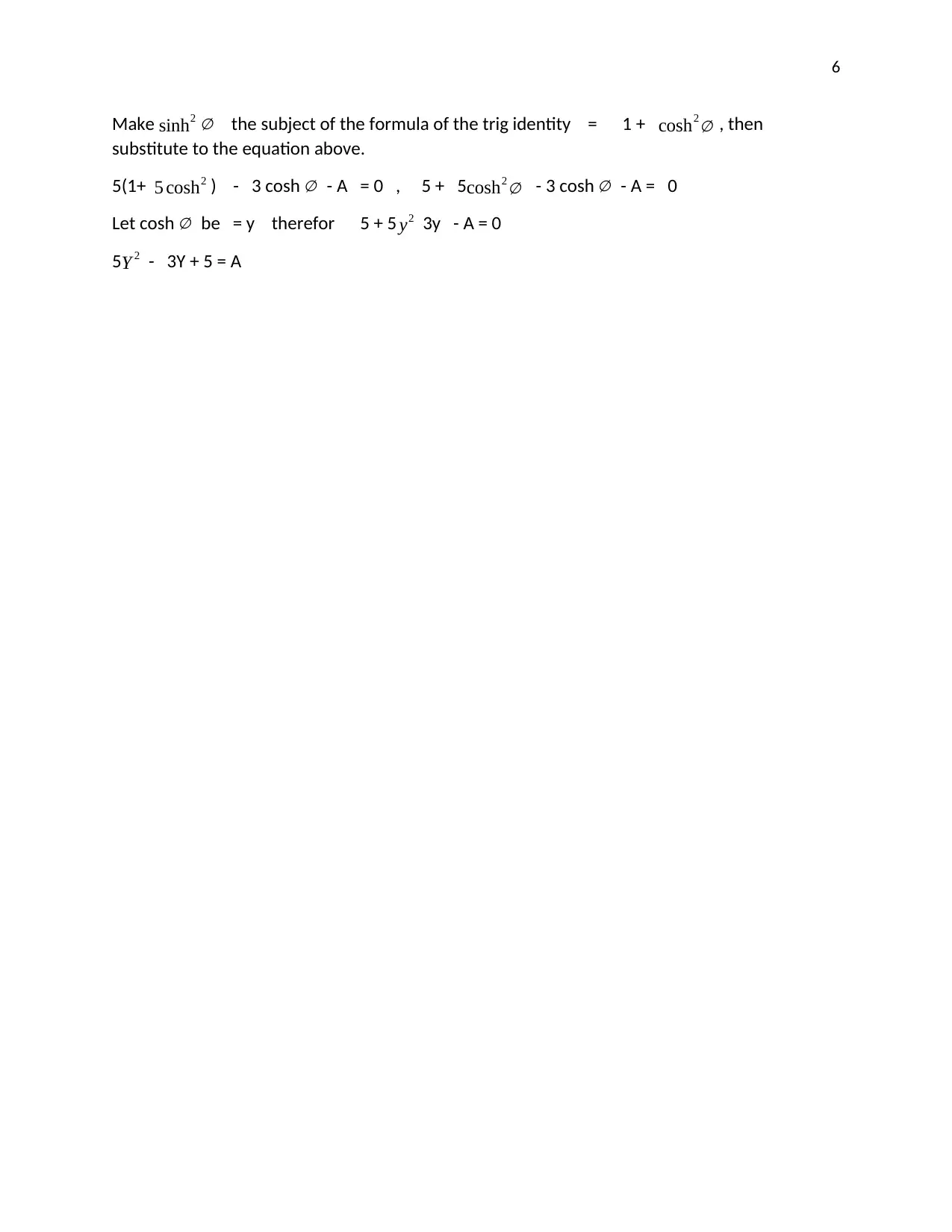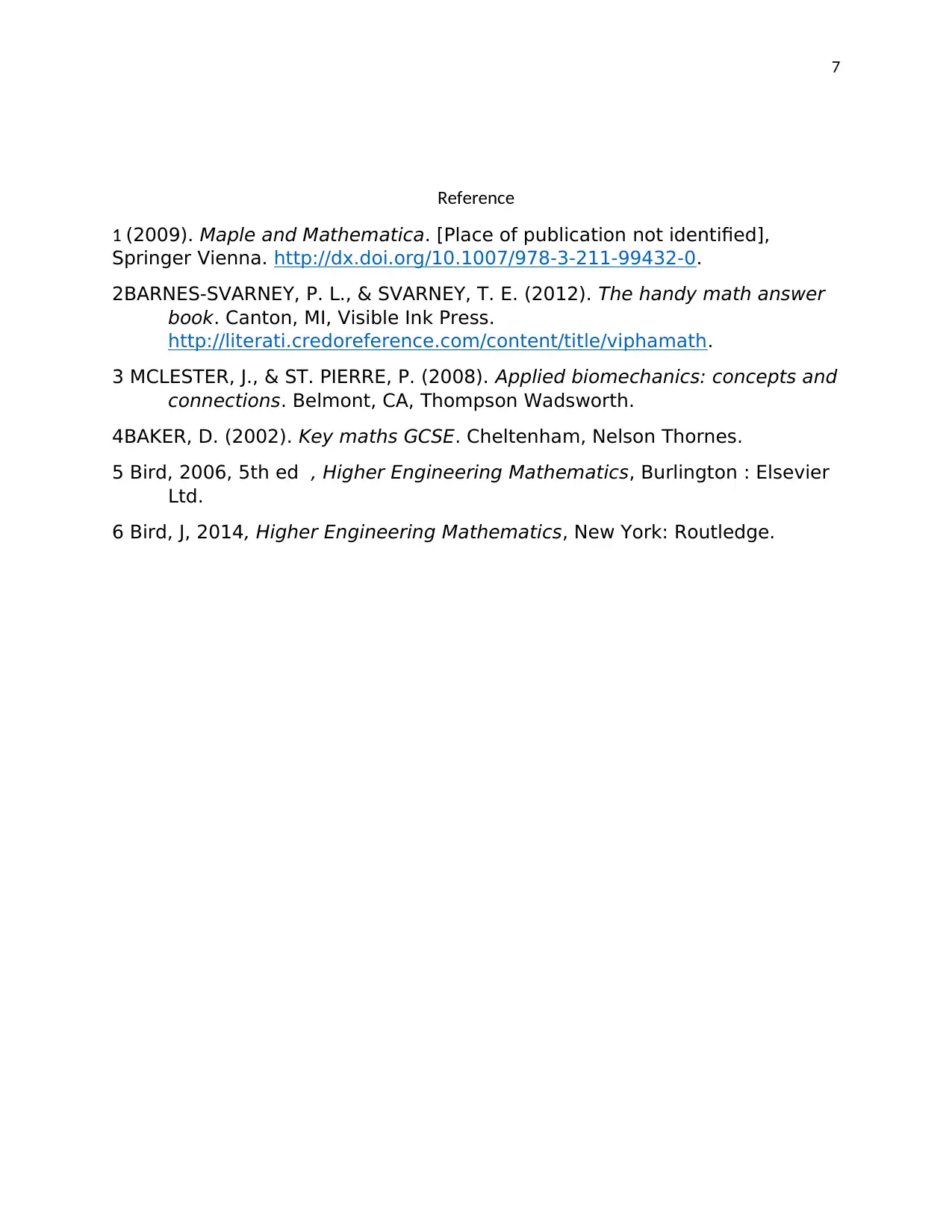Solutions to Analytical Engineering Mathematics 1 Homework
VerifiedAdded on 2023/06/15
|8
|1184
|373
Homework Assignment
AI Summary
This assignment provides solutions to several analytical engineering mathematics problems. Task 1 involves calculations related to a crank mechanism, including determining the distance traveled by a point on the mechanism, calculating angles, and finding distances moved. Task 2 covers angular velocity, linear velocity, and sinusoidal current calculations, including amplitude, periodic time, frequency, phase angle, and current values at specific times. Task 3 focuses on trigonometric identities and solving equations involving sine, cosine, sinh, and cosh functions. The solution uses trigonometric identities and algebraic manipulation to solve for unknown variables. Several references are cited to support the methods and concepts used in the solutions. Desklib offers a wide array of solved assignments and study resources for students.
1 out of 8










![[object Object]](/_next/static/media/star-bottom.7253800d.svg)